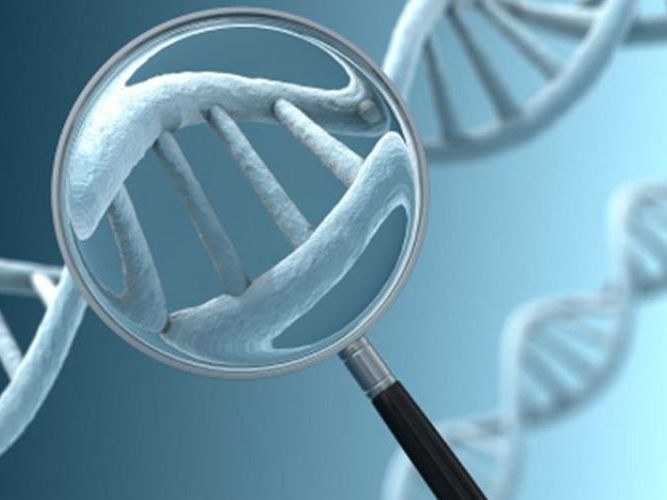Tip 1: What is the variability of organisms
Tip 1: What is the variability of organisms
Heredity ensures continuitygenerations, the transfer of signs from parents to children. However, the descendants of living organisms are not complete copies of their parents, since hereditary information is capable of changing. Heredity and variability are one of the most important properties of the living.

Variability is the ability of living organismsto acquire new properties that distinguish them from other individuals. Even identical twins are at least something, but they are different. Variability of organisms can be modification and hereditary, i.e. phenotypic and genotypic.
Modification variability
All signs of the body are determined by the genotype. At the same time, the degree of manifestation of a particular genetic feature depends on the conditions of the external environment and can be completely different. It is important to understand that by inheritance, not the symptom itself is transferred, but only the ability to manifest it under certain conditions. Modification changes in characteristics do not affect genes and are not passed on to the next generations. Most often such changes are subject to quantitative characteristics - weight, height, fertility and others. Different signs may depend on the environment to a greater or lesser extent. Thus, the color of the eyes and the blood group in a person are determined exclusively by genes, and the conditions of life can not affect them in any way. But the growth, weight, muscle mass, physical endurance strongly depend on external conditions - physical activity, quality of nutrition, etc. On the other hand, no matter how much you train and eat oatmeal, build muscle and develop endurance only up to the prescribed limits . These limits, within which any feature is capable of changing, are called the norm of reaction. It is genetically determined and inherited.Hereditary variability
Hereditary variability is the basis of diversityliving organisms, the "supplier" of material for natural selection and the main cause of evolution. It affects genes. Genetic variability has two forms - combative and mutational. Combinative variability is based on the sexual process, recombination of genes in the formation of gametes and the random nature of gamete encountered during fertilization. These processes operate independently of each other and create a huge variety of genotypes. The cause of mutational variability is the appearance of changes in DNA molecules. Mutations that occur under the influence of external and internal factors can affect both individual chromosomes and their groups.Mutagenic factors
Mutagenic factors significantly increase the number ofmutations in the DNA. These include ionizing and ultraviolet radiation (the latter is especially dangerous for light-skinned people), elevated temperature, mercury and lead salts, chloroform, formalin, dyes from the class of acridines. Viruses can also cause mutations.Tip 2: What Genetics Is Learning
The science of genetics gained independencemore than 100 years ago and began with the study of hybrid life forms. At the center of consideration of modern genetics are two basic properties of living organisms - heredity and variability. The methods used by genetic scientists allow answering important questions directly related to the evolution of living organisms.

Genetics and heredity
Under heredity in genetics understandthe universal ability of living organisms to transmit to the offspring information about some significant signs and features of development. Heredity allows species of living organisms to remain relatively unchanged for very long periods of time. It is an expression of the succession of generations. All organisms can be grouped into system units, distributed according to species, genera and families. This systematic nature of life on the planet became possible precisely because of heredity. This property makes it possible to preserve the characteristic features of similarity and differences within individual groups allocated within the framework of systematization. One of the functions of heredity is the preservation of certain features passing through a succession of succeeding generations. Another function is to ensure the nature of the metabolism that occurs during the development of organisms and in providing the desired type of development. The formation of a living organism passes through a series of definite stages, replacing each other in a clear sequence. Such development programs also fall within the sphere of interest of genetics.Variability as a subject of genetics
Another subject of genetics is variability. This property reflects the unstable preservation of features that are inherited from generation to generation. The cause of variability is the change and combination of genes. These processes occur in the course of the individual development of organisms. After heredity, variability is considered to be the second most important factor determining the course of the evolution of life on the Earth. The study of heredity of genetics leads by examining different levels of organization of life. At the same time, the analysis begins at the chromosomal and cellular level, gradually rising to the organisms and whole populations. The main method used in this is called genetic analysis, including, among other things, the elements of mathematical statistics. The variability of genes, which finds expression in the individual development of living organisms, is studied within the framework of a branch of science called ontogenetics. The arsenal of methods here is quite wide, it includes the analysis of immunological reactions, transplantation of tissues and even cell nuclei. Modern genetics is armed with effective tools to study the properties of organisms described above, which determine the evolution of life forms.Tip 3: What is puberty?
In the body of girls and boys with the onsetadolescence, hormonal changes begin to occur that lead to changes in appearance and behavior. They are associated with the sexual maturation of the body.








